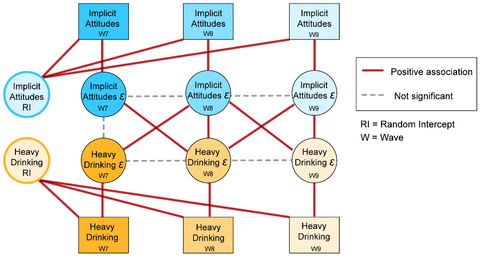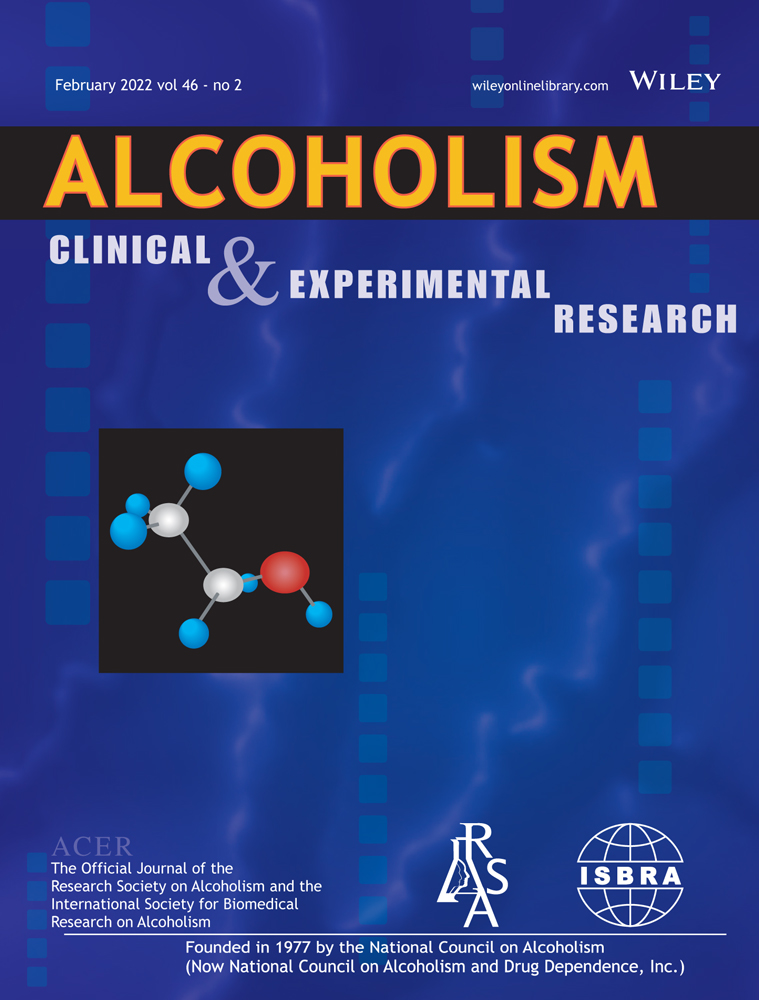Reciprocal associations between implicit attitudes and drinking in emerging adulthood
Funding information
Funding for this study was supported by a grant from the National Institute on Drug Abuse (NIDA) awarded to C. Colder (R01 DA020171), a grant from the National Institute on Alcohol Abuse and Alcoholism (NIAAA) awarded to K. Paige (F31AA028973), a grant from NIAAA awarded to F. Blow (T32 AA007477), and a grant from NIDA awarded to A. Weigard (K23 DA051561). The content of this study is solely the responsibility of the authors and does not necessarily represent the official views of NIDA or NIAAA.
Abstract
Background
Implicit alcohol attitudes are considered important in the etiology of drinking, and theory posits reciprocal associations between them. Research testing reciprocal associations between implicit attitudes (using the Implicit Association Task, IAT) and drinking is limited by a failure to consider multiple processes influencing performance on the IAT and to disaggregate within- and between-person effects. The current study addressed these limitations by using a diffusion model to analyze IAT data and Latent Curve Models with Structured Residuals to test reciprocal associations.
Methods
The sample included 314 emerging adults from the community (52% female; predominantly non-Hispanic Caucasian (76%) or African American (15%)) assessed annually for three years. Differences between IAT conditions in the drift rate parameter of the EZ-diffusion model (vΔ) were used as an alternative to traditional response-time-based indices from the IAT (d-scores). Differences in drift rate have been found to index implicit attitudes effectively.
Results
Within-person reciprocal associations were supported, but between-person associations were not. Positive implicit alcohol attitudes (vΔ) were prospectively associated with heavy drinking, which was positively associated with subsequent positive implicit alcohol attitudes.
Conclusions
We found that positive implicit alcohol attitudes and heavy drinking reinforce each other in a negative cascade within individuals. The results highlight the importance of disaggregating within- and between-person prospective effects when testing dual process models and suggest that the diffusion model may be a fruitful approach to enhance the construct validity of IAT assessed implicit attitudes.
Graphical Abstract
This study used the EZ-diffusion model to distinguish multiple processes impacting responses on an Implicit Association Task (IAT) and disaggregated within- and between-person associations between implicit alcohol attitudes and emerging adult heavy drinking. Results supported drift rate as an index of implicit alcohol attitudes and prospective within-person reciprocal associations between positive attitudes and heavy drinking. The diffusion model enhances construct validity of IAT-assessed implicit attitudes and it is important to distinguish within- and between-person associations when testing dual process theories.
CONFLICT OF INTEREST
The authors report no potential competing financial or non-financial interests.





